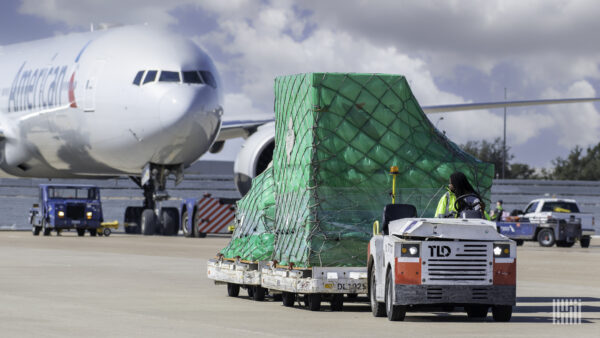Air cargo market heads toward 2nd best year despite softening
IATA says strong cargo demand, passenger recovery could make global airline industry profitable in 2023
Air cargo business is slowing amid global macroeconomic pressures but 2022 is still shaping up as one of the industry’s strongest years ever with cargo revenues nearly double those before the pandemic, the International Air Transport Association said Monday. The cargo forecast was part of an upgraded outlook showing that the industry is inching closer to profitability in 2023 as passenger demand finally kicks into full gear.
The largest airline trade association said it expects cargo to continue supporting the industry’s performance. Volumes are projected to rise this year even as cargo yield moderates with the additional belly capacity from passenger aircraft returning to service.
“Airlines are resilient. People are flying in ever greater numbers. And cargo is performing well against a backdrop of growing economic uncertainty. … It is a time for optimism, even if there are still challenges on costs, particularly fuel, and some lingering restrictions in a few key markets,” said IATA Director General Willie Walsh in opening remarks to the group’s annual general meeting in Doha, Qatar.
Cargo revenues are expected to tally $191 billion, a 6.4% reduction from 2021’s peak of $204 billion and nearly twice the $100 billion achieved in 2019. Airfreight will account for 24.4% of total passenger and cargo airline sales, IATA estimated. With passenger traffic decimated by the pandemic, cargo represented 36.2% and 40.3% of airline revenues in 2020 and 2021, respectively, compared to about 12% in the preceding four years.
Airlines are projected to carry more than 75 million tons this year, which would represent a record high. But growth has flattened on a seasonally adjusted basis — albeit at near-record high volumes. Nonetheless, IATA projects air cargo volumes to be 11.7% above the pre-pandemic level following red-hot 2021 growth of 6.9% versus 2019.
The figures could actually be higher because IATA only surveys its 292 members and many all-cargo carriers do not belong to the group.
Global merchandise trade growth is expected to moderate to 3% this year, after increasing by double digits last year, according to the World Trade Organization, due to unprecedented economic swings caused by the pandemic. Over the past 20 years, global trade has grown, on average, 6% annually. IATA forecasts the value of international trade shipped by air this year to be about $8.2 trillion, up from $7.5 trillion in 2021, as inflation increases the cost of goods.
Several factors are acting as a drag on international goods movement by air: delayed factory production due to heavy-handed COVID lockdowns in China; the Ukraine war; a drop in new export orders; a shift in consumer spending toward services in a relaxed pandemic environment; high inflation; and congestion at airport cargo terminals.
IATA estimates global GDP is now poised to grow about 3.4% this year, down from 4% to 4.5% prior to Russia’s invasion of Ukraine. The U.S. and European Union economies contracted by a fraction of a point in the first quarter and China’s second quarter output will be heavily impacted by the extensive lockdowns imposed in April and May.
Prior to the invasion of Ukraine, about 19% of international cargo shipments transited Russian airspace. Russia’s ban on overflights in response to 40 nations closing their airspace to Russian aircraft means higher fuel costs for carriers that now must detour around Russia on Asia-Europe and Asia-North America routes. The extra transit time and need to carry extra fuel has reduced aircraft utilization for cargo by about 20%, according to aviation experts.
Marie Owens Thomsen, IATA’s chief economist, last month estimated a 20% chance for a recession next year, but said economic activity and air cargo would still be relatively solid in 2022.
Sources: Eric Kulisch – American Shipper


